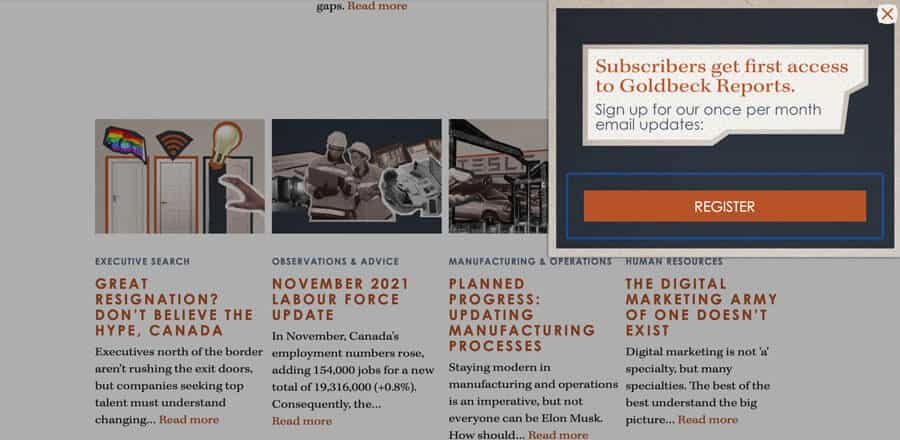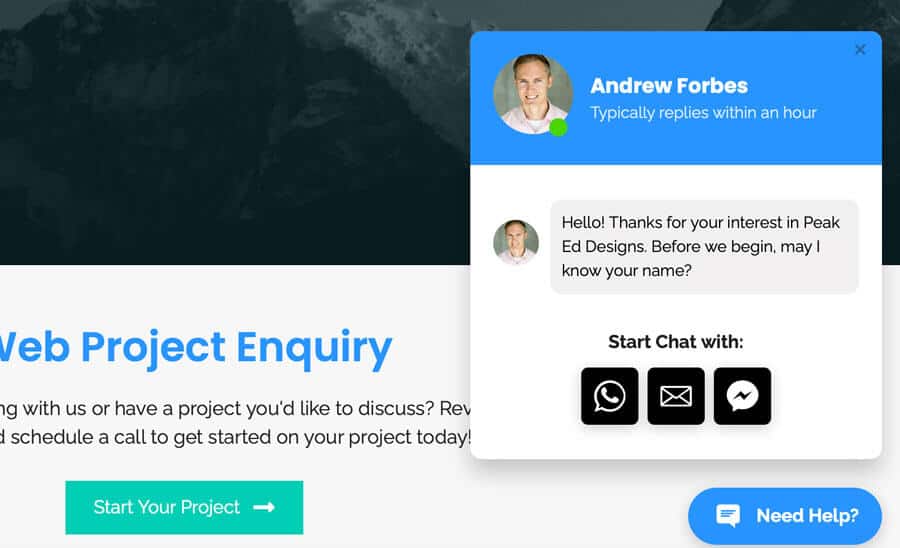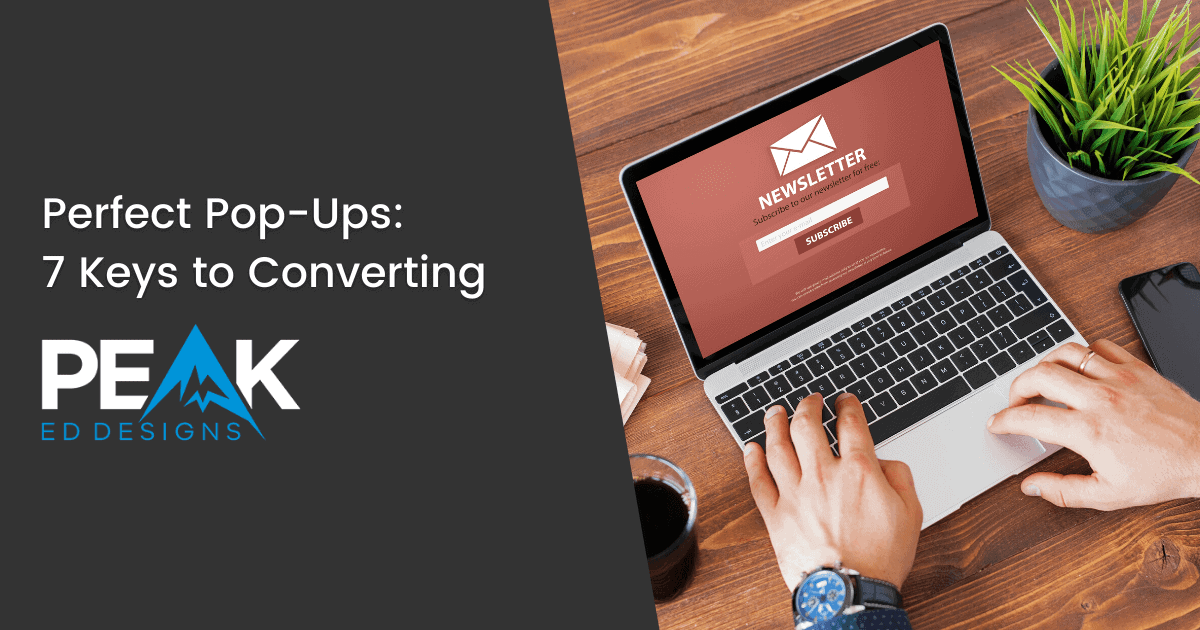Ask most people and they’ll describe website pop-ups as an annoyance. Regardless, they continue to exist. Why? Because they work! When used effectively pop-ups generate email signups, steer website visitors toward promotions, and ultimately earn conversions. Needless to say, they’re an important component of the sales funnel. Used incorrectly, however, they run the risk of annoying would-be customers, who just might bounce from your page like a basketball.
Table of Contents
Pop-ups Considerations
A visitor to your website represents a precious opportunity to generate a customer, and it’s up to you to convert. The stakes are high, which is why the entire field of user experience obsesses over making websites a positive, pain-free place to visit and do business. Will your website feature pop-ups? If so, where? When? Do it right and you provide your visitors a roadmap to their satisfaction. Do it wrong and you present them with a frustrating game of whack-a-mole that will have them running for the exit (hurting your SEO efforts in the process).
Consider these seven factors to make sure you’re using the right type of pop-up effectively.
Time-Based Pop-Ups
In pop-ups, as in life, timing is everything. Timed pop-ups are programmed to appear after a certain number of seconds have elapsed on the page. The passage of time has given the user an opportunity to get the lay of the land and serves as an indicator that they’re at least somewhat interested in what you’ve got to offer. Like a waiter who arrives exactly when you’re ready to order, they’re a welcome portal to the next step in the journey.
Papa Was a “Scrolling” Stone
Scrolling activity can serve as another indicator of interest. If the visitor is exploring your site, they may be primed for a nudge in the right direction. Those who have scrolled through 50% of the page, for example, are probably invested, and are less likely to bounce if something unexpected pops up with an opportunity to sign up or learn more about your services. Let’s get ‘em!
Converting with a Page-Based Pop-Up
Page-based pop-ups are triggered when a reader either visits a certain number of pages, or visits a particular page. Again, what we’re looking for is intent. Every action a reader takes on your website offers a clue about their frame of mind, their interest, and their intentions. Visiting the about section, for example, shows that the reader is trying to understand the big picture and assess your bona fides. Clicking a particular product or service page shows a more specific interest. By assessing their current stage in the journey, you’ll be able to hit them with the right pop-up at the right time.

Please Don’t Go! The Double-Edged Sword of Exit Intent Pop-Ups
“I’m gonna miss your love the minute you walk out that door” sang one-hit wonder KWS on their 90s dance hit, Please Don’t Go. Asking someone to reconsider leaving could be considered a humble and genuine act. Blocking the doorway? That’s just creepy. Is this the vibe you want your website giving off?
Someone who acts to leave your website (or a portion of it) could be seen as an opportunity slipping away, which makes the last-minute exit intent pop-up seem like a reasonable step to take. On the other hand, they could be planning a future return, and could be rubbed the wrong-way by your desperation. Proceed with caution.

Popping Up When Things are Clicking
Click-based pop-ups are an obvious choice. In this case the user has taken an action that requests additional information, which the pop-up provides. As opposed to other pop-ups, which may surprise the user, click-based pop-ups are the natural and welcome result of a request made by the user.

Right Place, Right Time: Pop-Up Placement
Location is everything, or at least one of the things. Some websites go to extreme lengths and use full-screen pop-ups. On the bright side, these will not escape attention! On the downside, they can leave the reader feeling like Curly Joe after getting smacked by Moe on an episode of The Three Stooges. Centered pop-ups or banners are less abrasive alternatives. For extra smoothness, consider a slide in banner.
Frequency: How Many Pop-Ups are Enough?
A couple of pop-ups can be effective in steering website visitors toward a desired action, but it’s important to know when enough is enough. Hit them too many times and you’ll become the visitor’s enemy, and they just might leave in spite. If a user specifically closes a particular pop-up, a cookie can be used to ensure they don’t immediately encounter it again.
Getting Started
Peak Ed Designs create websites with our clients’ success in mind. All aspects of our design are catered toward maximizing our clients’ ability to convey their message and convert visitors into customers. Tell us your story and your goals, and we’ll tell you how we can help you gain and convert website visitors, and grow your business.
I want a website that results in more business.

